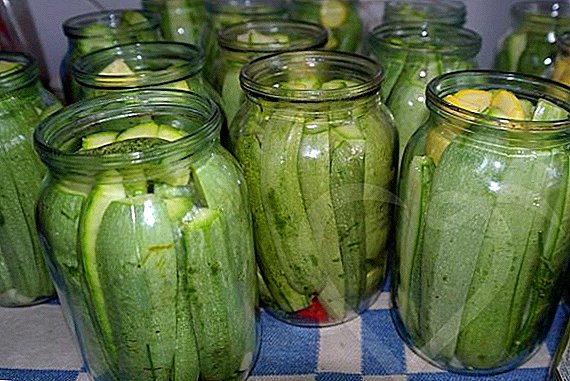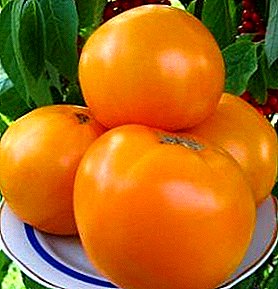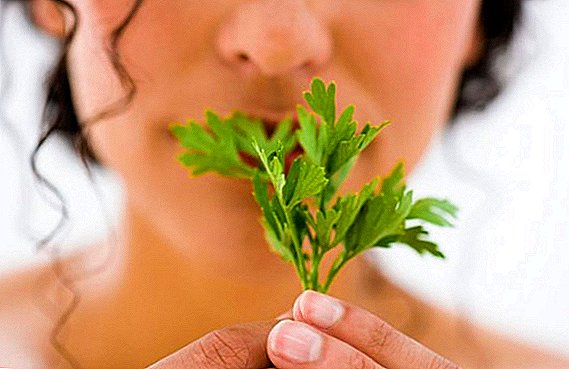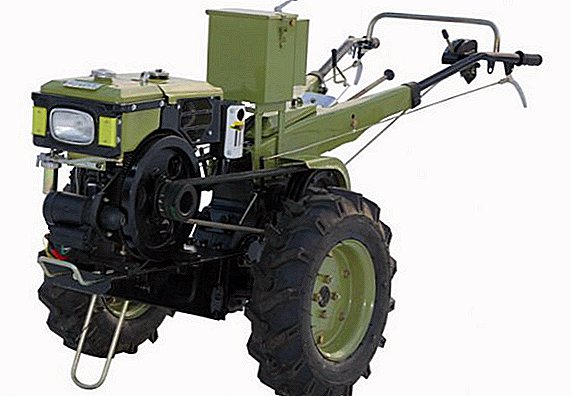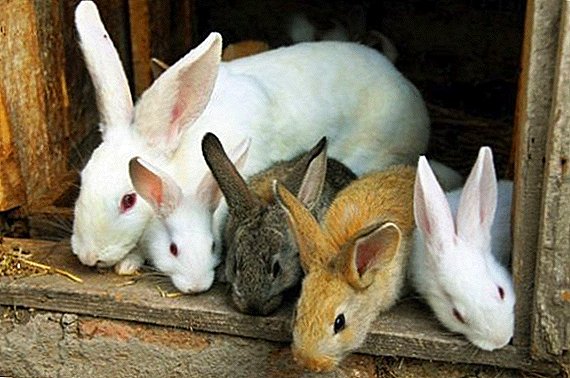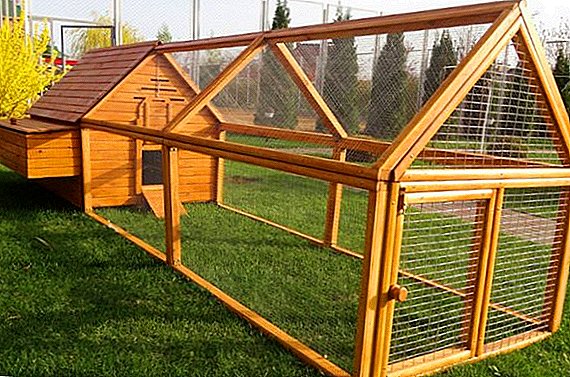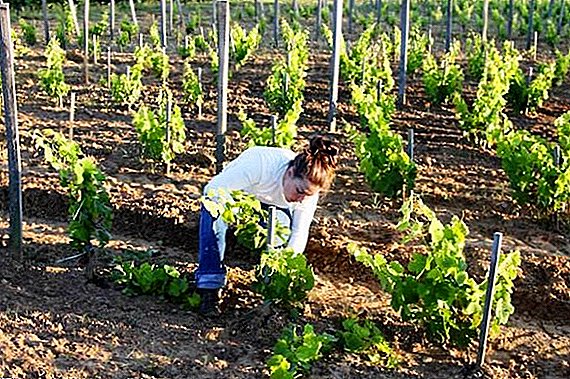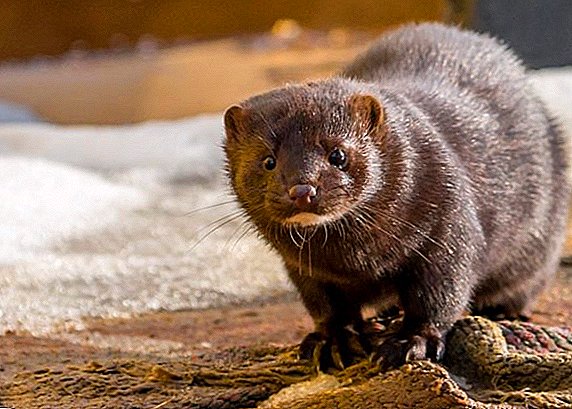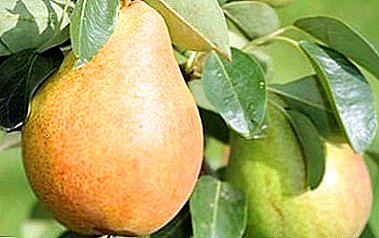
Pear is known to man for a long time. The first trees appeared in ancient Greece and were widely distributed, first as wild plants, and then as cultivated plants.
Fruits of a pear possess a huge amount of useful substances, in antiquity they cured many diseases with their help. One of the oldest and most famous varieties is Forest Beauty.
She very quickly won the love of gardeners, and still enjoys incredible popularity. This type of pear is the most common and is grown everywhere.
What kind of pears refers?
 Pear "Forest Beauty" is an excellent high-yieldingautumn variety pears, with a rich history and many virtues.
Pear "Forest Beauty" is an excellent high-yieldingautumn variety pears, with a rich history and many virtues.
With its help, more than 30 new, very common today varieties of pears were obtained.
Among the autumn varieties, you should pay attention to Bere Bosk, Talgar beauty, Uralochka, Silent Don and Otradnenskaya.
Breeding history and breeding region
The tree of this variety was discovered by accident, at the beginning of the XIX century. Found it was Chatillon in the Belgian forests, near the town of Alost.
The fruits growing on this tree were different extraordinary sweet taste, and their seeds very soon began to be planted in all Belgian gardens. The variety quickly became widespread, and by the end of the XIX century. forced out almost all varieties of pears, available at that time in Europe.
Pear "Forest Beauty" has several names: Alexandrina, Oil tree and Marie-Louise. Although in Europe, Marie-Louise is considered a separate variety, unrelated to the “Forest Beauty”.
The variety was zoned at the very beginning of the last century. North Caucasus and Lower Volga regions of Russia. However, thanks to its winter hardiness, unpretentiousness and resistance to droughtThis variety has gained popularity in many countries: Belarus, Ukraine, Moldova, in the Baltic States and Central Asia.
In these regions pear varieties Victoria, Kupava, Lemonka, Lira and Rossoshanskaya Dessert are excellent.
Pear "Forest Beauty": photo and description of the variety
 Tree at the “Forest Beauty” medium to tall, fast growing.
Tree at the “Forest Beauty” medium to tall, fast growing.
Crown broad, wide pyramidal, not strongly foliated. The bark is gray, rough. The shoots are strong, straight, thick, burgundy.
Buds are small, slightly silvery. The leaves are medium in size, dark green, with a long petiole and finely toothed edges.
The flowers are small, pink and white, with small oval petals. Can grow as inflorescences of 6-10 pieces, or one by one.
Blooms "Forest Beauty" in April and May. A distinctive feature of this variety is absolute insensitivity to frost during flowering.
The fruits of the beauty are not very big, weighing about 120-150 grams, sometimes up to 300 grams. In shape, they resemble a somewhat rounded egg. The skin is thin, but rather dense, slightly rough.
At the beginning of the maturity of the fruit, it is greenish, and when fully ripe it is yellow, with dark subcutaneous spots and red tan on the sunny side.
The flesh is yellow, very tender, juicy and soft, slightly oily, with a very pleasant sour-sweet taste..
Thanks to its great dessert taste These pears are more often consumed fresh, but can also be used for cooking compotes or jam.
For more information about the variety and see the pears "Forest Beauty" can be in the photo below:




Specifications
"Forest Beauty" - extremely frost-resistant grade. Can to withstand temperatures down to -45-50 Сand considered the most winter hardy of all European varieties. In Russia, this variety grows well in fairly harsh climatic conditions.
Excellent winter hardiness is demonstrated by such varieties as Muscovite, Skorospelka from Michurinsk, Chizhovskaya, Lel and Sverdlovchanka.
Another important advantage of the beauty is high yield. It fructifies stable and annually. Only in the number of crops frequency is noted.
 If this year the harvest was rich, then the next - much less. Fruiting begins 5-7 years after landing, and when grafting on quince - by 4-5.
If this year the harvest was rich, then the next - much less. Fruiting begins 5-7 years after landing, and when grafting on quince - by 4-5.
Begins ripening on the 20th of August. Unfortunately, "Forest Beauty" prone to rapid ripening, fall and damage of fruits.
therefore harvesting is better to start 8-10 days before their full maturation. But in this case, the fruits are stored for long, only 15-20 days.
The following grades of pears demonstrate excellent yields: Hera, Lada, Children's, Decakrinka, Vernaya and Noyabrskaya.
Planting and care
The composition of the soil is undemanding, but will grow better on fertile, loose sandy loams or loams.
Place for the "Forest Beauty" suitable sunny and well ventilated, with low groundwater flow. Before planting, carefully dig up the soil, remove weeds and lime.
To plant a tree should be immediately to a permanent place. Can be carried out landing in spring (May) and autumn (early October). Nearby at the same time it is necessary to plant pollinating varieties.
Pear "Forest Beauty" self-pollinated only partially. For a decent harvest, the presence of a number of pollinators such as Josephine Mechelnskaya, Limonka, Williams is required.
Prepare pits for landing in advance. They must be deep not less than 1-1.2 m and a width of about 0.8 m.
At the bottom of the pit lay a mixture of excavated soil, 20 kg of humus, 0.2 kg of superphosphate, 0.1 kg of potassium sulfate and two buckets of coarse sand. Then 30 liters of water mixed with 0.6 kg of dolomite flour are poured into the pit and left to stand for a week.
 After this, a garter peg is installed in the pit, and a seedling is placed. Its densely sprinkled with soil, making sure that the root neck was a few cm above ground level.
After this, a garter peg is installed in the pit, and a seedling is placed. Its densely sprinkled with soil, making sure that the root neck was a few cm above ground level.
Place around the seedling carefully rammed and leave a small hole.
Then the tree is free tied to a peg, well watered and mulch the soil with dry humus or fine sawdust.
Further attention should be paid to watering the tree. In the first few years, before the start of fruiting, it is watered. at least 5 times a year, and then watering is reduced to 2-3 times.
After each such irrigation it is necessary to loosen and mulch the soil.
Young trees should not be watered at the root. Better at a distance of 15-20 cm from the trunk to dig a small circular groove, a depth of about 20 cm, and pour water there.
Fertilizers begin to make in the second year after landing.
In early spring, nitrogen fertilizers are used (3 tablespoons of urea per 15 liters of water), and in September potassium phosphorus fertilizer can be used.
During the fruiting period fertilizers are applied more often, about 3-4 times a year. The first feeding is carried out at the beginning of May, the second - at the beginning of flowering, the third - during the ripening period and the fourth - after picking the fruits.
 You can apply and spraying plants with growth promoters. Wood processing is good wood ash solution: 2 tbsp. on a bucket of boiling water (cool and strain).
You can apply and spraying plants with growth promoters. Wood processing is good wood ash solution: 2 tbsp. on a bucket of boiling water (cool and strain).
When planting seedlings spend the first formative pruning. To do this, the central trunk of the tree is shortened so that its the tip was 25 cm higher the tips of the main branches, and these branches are cut to 1/3 length.
In the second year, all major branches and trunk shorten by 15-20 cm Further pruning is carried out annually: spring and autumn.
In the spring, you can do a small corrective pruning to maintain the shape of the crown, and in the fall cut off old, diseased or damaged branches.
Every 3 years for adult trees, they use anti-aging pruning: remove dried branches and thickening crown shoots.
"Forest Beauty" is very frost-resistant and does not need wrapping for the winter. It is important to reliably protect the trunk from damage by hares and mice. To do this, fit a strong nylon fabric, wrapped around the bottom of the barrel.
Important points in the care of the "Forest Beauty" is protection from disease. Unfortunately, this magnificent in all respects the variety is often affected by scab.
Diseases and pests
//selo.guru/ptitsa/bolezni-p/gribkovye/parsha.html - This is one of the most common and dangerous fungal diseases of pears. Often this fungus affects not only the leaves, but also shoots and fruits. You can see it by the appearance on the underside of a leaflet clearly visible yellow spots.
Among varieties resistant to scab, you should pay attention to the Severianska Krasnoshchekuyu, Oryol Beauty, Oryol Summer, Elegant Efimova and Marble.
 A little later, the spots darken and become covered with a fluffy white bloom. Young shoots form deep cracks with the same patina.
A little later, the spots darken and become covered with a fluffy white bloom. Young shoots form deep cracks with the same patina.
Fruits are covered with small dark spots with a narrow white border. Over time, they are deformed, cracked and fall off.
This fungus overwinter in old fallen leaves and bark.
To prevent infection, it is necessary to regularly rake dry leaves, scrape old bark from the shoots and branches and carry out preventive spraying of the plant three times a year.
The first treatment is carried out at the beginning of the swelling of the kidneys with a 4% solution of Bordeaux mixture, the second - after the end of flowering and already 1% solution, and the third - 3 weeks after flowering.
If the infection does happen, then You can try to process the soil under a tree 10% ammonium nitrate. But only after harvest, and preventing this solution from falling on the trunk and branches of the plant.
If in time to carry out all the necessary preventive measures, then grow Forest Forest on your site is not difficult.
The undoubted advantages of this variety are:
- high yield;
- extreme frost resistance;
- unpretentiousness in leaving and undemanding to the soil;
- great fruit taste.
 The disadvantages are:
The disadvantages are:
- propensity to ripen and shatter fruits;
- susceptibility scab.
Despite this, the “Forest Beauty” pear deservedly does not lose its popularity among gardeners and is still often found on many dacha plots.


